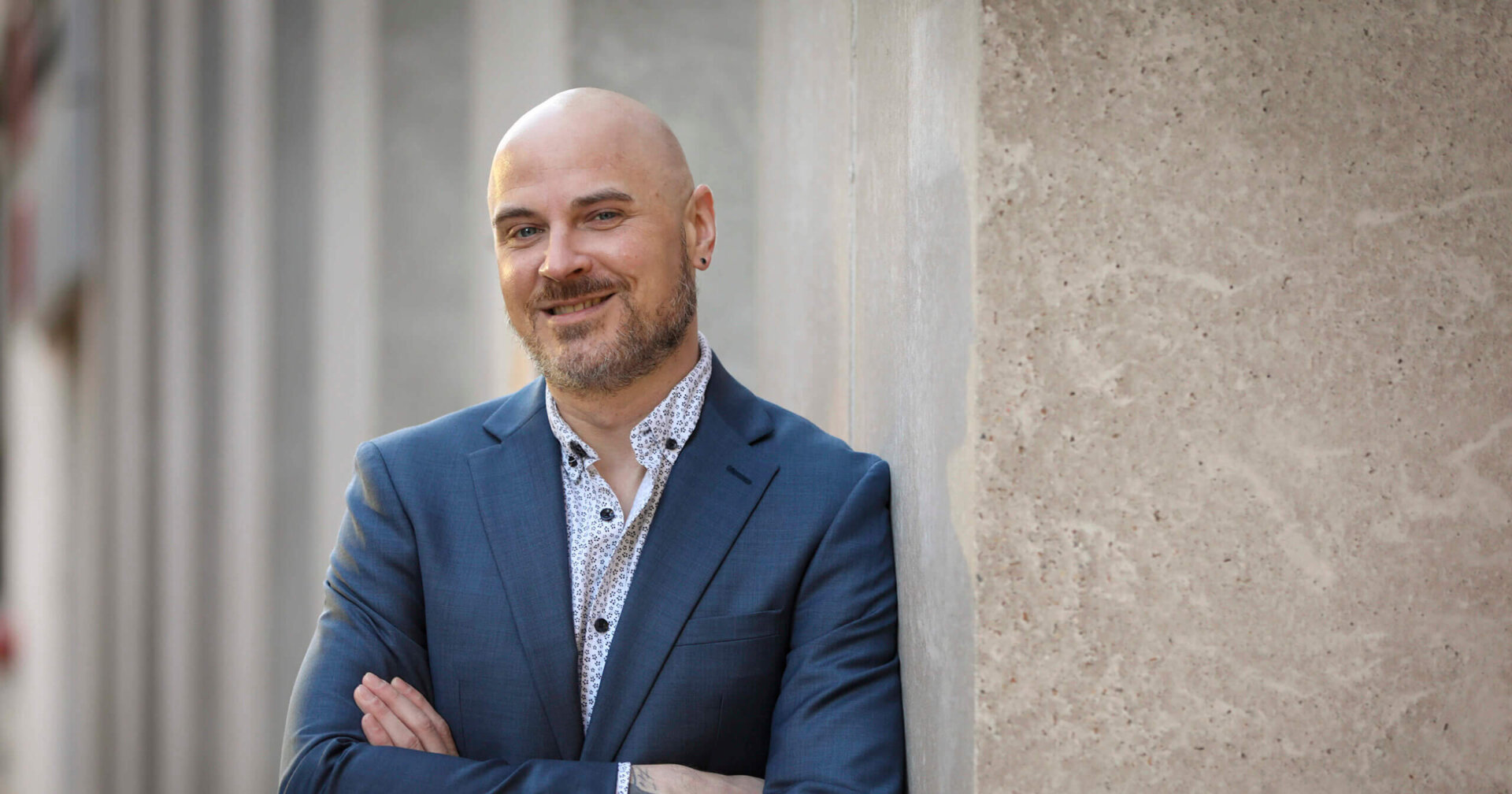
Introducing Jeff Herron
This past August, Jeff Herron joined the Lexington-Fayette Urban County Government’s Office as the Director of Homelessness Prevention and Intervention (OHPI). However, this isn’t Jeff’s first time working in homelessness intervention or prevention or even with the OHPI. From providing support to individuals with mental illnesses to ensuring compliance with federal regulations, Jeff has a long history of advocating and directly working to end homelessness across Kentucky. We got to talk with him a little bit about that history and his current role as Director:
1. Can you tell us about yourself?
Originally from the suburbs of Detroit, I’ve lived in Kentucky most of my life. My family relocated to Bowling Green, KY, when I was in high school. I completed my undergraduate degree at Western Kentucky University before attending graduate school at the University of Kentucky. A sociologist by training, I originally planned to complete my Ph.D., but found that academia wasn’t the place for me. I fell into social work—working briefly in HIV Prevention before moving into the homeless services field.
I’ve spent the bulk of my career working with those experiencing homelessness. From 2008 to 2014, I worked at Volunteers of America as a case manager in a permanent supportive housing program. Next, I served as the Director of Programs at New Beginnings, Bluegrass, Inc., an organization that provides housing and supportive services for individuals with serious mental illness. Then, I came to Lexington-Fayette Urban County Government in June of 2018.
At LFUCG, I served as the Office of Homelessness Prevention and Intervention’s Continuum of Care Coordinator until the close of 2021. Next, I moved to the Division of Grants and Special Programs, where I served as a Grants Manager until returning to the OHPI as its new Director in August.
2. This isn’t your first time working on LEH. Can you share a little about your history with OHPI and what brought you into your new role as Homelessness Prevention Manager?
I spent about four years in the OHPI previously, working under the previous Director, Polly Ruddick. And then, when I moved to Grants and Special Programs at LFUCG, I didn’t anticipate my time there would be so brief. However, Polly leaving really made me reflect on what was next for me. Having some time away to recharge my batteries, I felt like the right step was for me to return. Having spent 14 years working on the issue of homelessness, the prospect of returning to the Office felt like returning home. Looking back at my career, I felt my experience gave me a unique perspective. I know what it means to do this work at various different levels—from direct service to program management to system administration.
Now that the pandemic is winding down, we’re returning to life as normal—only the world has changed. It’s a new normal with its own unique challenges. There’s a lot of work to be done, but I’m excited to see what we can accomplish.
3. As Homelessness Prevention Manager, what are some of your key roles and responsibilities?
This office deals with pretty much every aspect of homelessness. Most people are surprised to learn that we are an office of just two staff. That’s a big undertaking for two people. While we are not a direct service office, we primarily serve to educate, advocate, coordinate and facilitate. As Homelessness Prevention Manager, I’m responsible for identifying the key issues and system gaps faced by our population, strategically coordinating resources and stakeholders, raising awareness and gaining support from the community and the Urban County Council, and developing solutions and systems that serve those in need.
4. While we’re talking about this position, I’m wondering if you can tell me more about it. What does a typical day look like for you?
I’ve learned there is no such thing as a typical day in this role. As a small staff, we work incredibly hard and have to be prepared to switch gears frequently to get the job done.
Most mornings, I get in early to catch up on emails, review the Office’s calendar, and make a plan for the day.
A lot of what we do is coordination—so a lot of time goes into scheduling meetings, preparing agendas and meeting packets, conducting follow-up steps to keep momentum going between meetings. Often we’re trying to develop solutions for unmet needs or issues in our community—this involves researching what other communities are doing and reaching out to colleagues in other cities or doing work in other disciplines.
As the Continuum of Care lead, we are also responsible for being in compliance with Housing and Urban Development (HUD) requirements. This can involve reviewing regulations, writing policy documents, providing technical assistance to our partners, coordinating events like our LexCount, or analyzing system data. We’re also responsible for continuous improvement of our system—monitoring subrecipients for compliance, conducting evaluation of our systems and processes, and developing strategies to help the system improve performance on key indicators—like reducing the length of time individuals remain homeless, increasing access to income, and increasing exits to permanent housing.
We’re also a primary source of information on the subject of homelessness and local needs and resources. We talk to dozens of people via phone and email each day. We help individuals in need navigate community resources and find appropriate assistance. We speak to groups like neighborhood associations and the Urban County Council to advocate for the needs of this population. We help organizations and individuals figure out how they can make an impact.
5. What’s one goal that you have for the Lex End Homelessness movement this year?
One goal for this year is to expand and diversify our membership. Since the launch of the Lex End Homelessness campaign, we’ve had great success in recruiting new members. But I think there’s always room for improvement. I’d like to see more private citizens and neighborhood associations become involved. I also want to think strategically about what organizations might be missing from the table. Our partners help us facilitate access to those who need services the most and help unlock new possibilities with the knowledge and resources at their disposal.
6. If someone wanted to get involved or support the LEH movement, what would you recommend?
I always recommend that people start by reflecting on what their interests are and what they feel they have to contribute. For example, is there a certain issue or population that really speaks to you? Are you passionate about veterans or families or youth? And what skills or experience do you have to offer others? Are you a hairdresser, a photographer, an interior designer, or a handyman? There might be opportunities for you to provide a free haircut, photograph an event, or even spruce up an organization’s space.
A lot of our partner organizations will share requests directly via social media—whether that be a request for volunteers or donations. People interested in getting involved can also contact the Office of Homelessness Prevention and Intervention. We’re glad to help pair them with a partner organization based upon their interests.
Get involved with LEH by joining the Continuum of Care today. Partnership is free and highly encouraged for any organization or person working in the field of human services. You can also contact one of our many partners to ask about opportunities to get involved. Learn more on our website or by following us on social media @lexendhomelessness.
© Copyright 2021 l LFUCG
test by support


